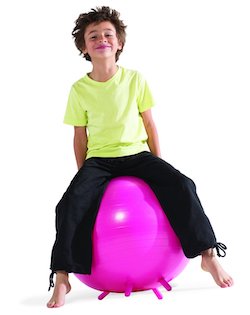Maximizing Online Learning: a workshop for Southeast Regional ADHD Conference
by Kathy Kuhl Resources from “Maximizing Online Learning via Best Practices of Homeschools,” my workshop for the University of Alabama & ADDA-SR, 13th Annual ADHD conference, January 28-29, 2021:
Outline of workshop:
1. How homeschool addresses current needs and stressors
Unlike parents managing school at home, homeschoolers determine goals; select, adapt or develop their own curriculum and methods of assessment; and determine yearly, weekly, and daily schedules. They can customize all these and their teaching settings to their children’s needs, talents, and interests.
2. Environmental adaptations to lessen distractions
- Sound: Use headphones, earbuds, or, if offline, earplugs. Make sure child keeps microphone on when permitted, to improve likelihood of their participating.
- Visual: Is the view from student’s seat distracting? Is lighting good? Don’t watch online school in dark, cave-like places.
Practice the 20-20-20 rule to relieve eyestrain. Every 20 minutes, look up for 20 seconds at something at least 20 feet away. Use a timer. - Seating: tablet or computer’s camera at a good angle for the student’s vision and posture.

When not typing, your students may try sitting on exercise ball, squishy cushion, or T-stool (see below). These wobbly seats may help your child get the wiggles out by providing core muscle exercise. Or students may lie on their stomachs on the floor. Some parents told me that the deep pressure soothed their distracted kids.
If teacher permits, student may turn off screen and wander while watching. Teacher can require student to text in often to show they are still paying attention.* - Location: Consider foot traffic, WiFi signal, power outlet. Your child may do better studying different subjects in different parts of your home.
3. Sensory practices that improve ability to focus
- Choose comfortable, but appropriate clothing. At the very least, change into “daytime pajamas.”
- My rules for effective fidgets are here.
- Movement suggestions from charter school teachers*:
-All-black Rubik’s Cube has been a favorite fidget at one school.
-Make sure students keep fidgets off screen.
-Teachers can have students listen for specific words in a lesson or story when they hear it either type something in the chat or do a specific body motion.  Oral: chewing gum, chewable jewelry such as Chewelry or Chewigems, Chewsticks pencil toppers, and other chewable fidgets. Links and more here.
Oral: chewing gum, chewable jewelry such as Chewelry or Chewigems, Chewsticks pencil toppers, and other chewable fidgets. Links and more here.- Movement breaks before, during, and after lessons. See GoNoodle.com for videos to move to between lessons.**
4. Tools for Parents
- Use parental controls to limit student’s access to the app they are supposed to be using.*
- Post weekly school schedule on whiteboard or paper, and make (or help older students make) checklists to prepare for the next day.
- Meet weekly and nightly to briefly review the next week or next day, respectively. Nightly checks should include seeing that homework and supplies are ready, and that the computer or tablet is on the charger. It’s the virtual school equivalent of checking the backpack.
- Help the kids get to bed on time consistently.
- Set priorities: relationships, love of learning, core skills, exercise, mental health, your family values.
5. Stress reducers
- Time outdoors: fresh air, nature, unstructured playtime. See Richard Louv, Last Child in the Woods.
- Provide administrative support with the schedules, assignments, and communications. See Rich Weinfeld’s article, “Special Education & the Pandemic: Three Things to Know,” about IEPs and DLPs (Distance Learning Plans), at CHADD.org.
- Enforce off-screentime. Family meals. No screens during meals, before bed, or in bedroom.
- Limit game time. Rapid-fire visual changes affect visual processing and vestibular systems. See occupational therapists Amy and Evelyn Guttmans’ discussion of impact and remedies. On sleep disorders and ADHD, see CHADD.
Got questions?
Please use contact form on my website or tap on the blue “Got Questions?” bubble in the lower right corner of this page to send a question or request a free consultation.
Other pages on this site you may find helpful:
- How to begin homeschooling
- Teaching tips for kids with attention problems
- Choosing curriculum for your child
- More about free or paid consultations with Kathy Kuhl
Sources cited in the video, “Maximizing Online Learning” for the 13th Annual ADHD Conference, January 28-29, 2021
(Click here to register or learn more.)
*Special thanks to Shelby Peach of KIPP 3D Academy, Houston, for contributing her tips and those of her KIPP 3D colleagues.
**Thanks to Pandora King for this suggestion.
College sophomore Joshua Kellogg, quoted by Amanda Woytus, “Does Virtual Learning Work for Every Student?” JSTOR Daily, October 17, 2020.
Reasons parents decided to homeschool their child quoted from National Center for Educational Statistics Parent and Family Involvement in Education: Results from the National Household Education Surveys Program of 2016, p. 4.
Tips from homeschooled teens Sophia, Zachary and Luke Davis, quoted by Laura van Straaten in “How to Make Remote Learning Work? Unmute Yourself!,” New York Times, October 14, 2020.
For directions on how to build a T-stool, see Carol Kranowitz’s The Out-of-Sync Child, or buy one from Therapy Shoppe or Amazon.

 Oral: chewing gum, chewable jewelry such as Chewelry or Chewigems, Chewsticks pencil toppers, and other chewable fidgets.
Oral: chewing gum, chewable jewelry such as Chewelry or Chewigems, Chewsticks pencil toppers, and other chewable fidgets. 